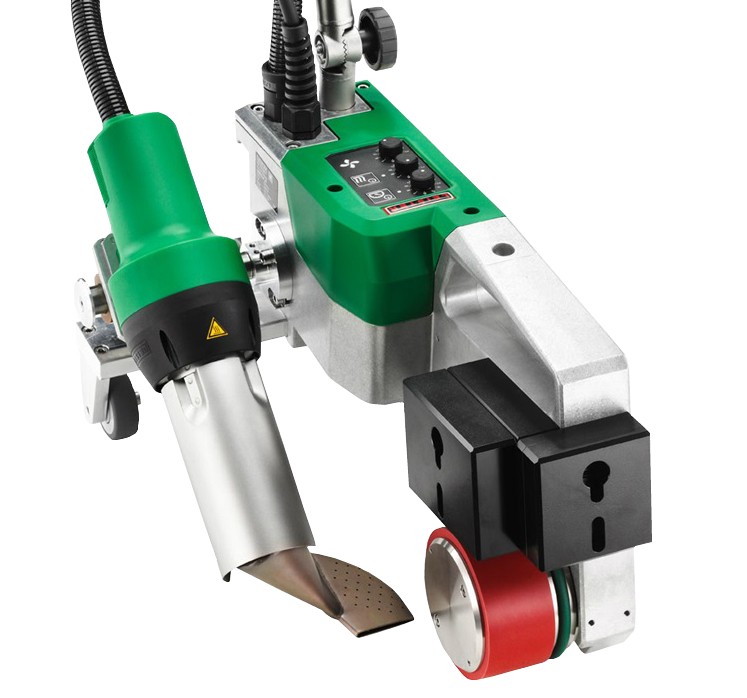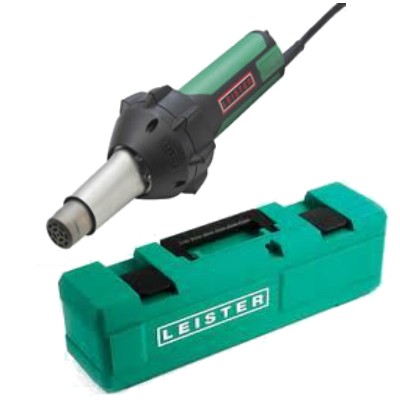Hot air plastic welding is the process of joining two or more plastic surfaces together using hot air, usually applied by a heat gun.
Plastic products can’t always be made in one piece. It is often better and more economical to fabricate products as separate pieces.
Hot air moulding is cheap and effective, creating a very strong bond between plastic materials that won’t separate. The tools are easy to use and cost-effective. They should be a staple in any toolbox.
It is also versatile. Hot air plastic welding can also be used to repair thermoplastics that have become cracked and broken.
There’s no need for expensive fillers or special treatments – all you need is a heat gun and some inexpensive plastic rods.
And after post-treatment work (which will usually involve sanding down and repainting) the hot air plastic welding work can be made to look almost invisible.
Hot Air Welding Process
The hot air welding process is generally split into three distinct phases. These are almost universal, no matter what you are welding.
- Preparing the surfaces to be hot air welded
- Applying heat and pressure
- Cooling and finishing
Hot Air Welders
There are two main types of hot air welders – automatic welding machines and hand-held hot air welders.
Automatic Welding Machines
Automatic welding machines are typically only used for sealing roofing and flooring – where there’s a lot of surface area to cover and two flat membranes are welded together.
Automatic welders consist of a hot air funnel which channels hot air underneath the welding membrane and applies heat and a roller which applies pressure and sticks the membrane down.
Leister automatic welding machines are top of the range products for mid-to-large scale roofing and flooring projects.




Handheld Hot Air Welders
Handheld hot air welders can be used on roofing and flooring jobs – usually to weld around corners and other tricky to reach spots – but they can also be used for a much broader range of jobs.
Handheld welders can be used to fabricate and repair products, seal up plastic membranes and many other one-off jobs.
They are usually shaped like large elongated tubes with many different nozzles that can be changed according to what kind of job needs doing.
Leister hand welding guns are among the best heat guns on the market today.
How To Prepare Plastic For Welding
Preparation is key to ensuring a good clean weld.
Make sure you clean off a good portion of the plastic area using a good quality plastic cleaning product.
If the plastic is painted, such as on a car bumper, then you should sand the paint off to get a reliable weld.
How To Hot Air Plastic Weld
Once you’ve prepared your plastics its time to weld.
If you are welding two separate pieces of plastic together then you may have to tack the two materials together before welding them properly.
Do this by holding the two pieces in place and running a tacking nozzle along the edge that you wish to join. The tacking nozzle will melt the plastic just enough to stick it together.
Once the materials are tacked together you need to make the joint permanent by welding it. One of the easiest ways of doing this is using a technique called ‘pendulum welding’.
With pendulum welding you use a standard nozzle which concentrates the heat into a small spot.
Putting downward pressure on the correct plastic welding rod, feed it directly into the groove, applying heat through the standard nozzle held about 5-10mm away and waiting for it to melt into the groove.
Pendulum welding is used when you only have a short area to weld or seal or if you don’t have the equipment for speed welding.
Speed Welding
Speed welding is useful when you have a large edge or crack that needs welding that needs welding.
It is much faster, especially when you are trying to weld flat edges. You need a special speed welding nozzle that melts the plastic as you feed it into the welder – then simply draw the welder along the desired area, apply some downward pressure on the welding rod.
Choosing The Right Plastic Rods
For a successful weld, you have to make sure you are using the right kind of plastic rods. In short, the rod material needs to be the same as the plastic that you are trying to weld.
If you are not sure what material the plastic you are trying to weld is, there are a couple of ways of checking.
You can often identify a type of plastic by looking for an engraved marking in the plastic.
If the plastic has no such engraving then you can recognise it by using an identification kit on a section of the plastic.
To identify what kind of plastic rod you should use:
- Clean a section of the plastic you are trying to identify
- Use a hot air gun to pendulum weld different plastic rods to the prepared area
- Try removing the plastic rods with force
- If the rods don’t stick, then they are not ‘like’ materials
- Continue until you find a plastic rod that sticks
Welding Tarpaulin And Other Flexible Materials
Leister hand held hot air guns can also be used for welding tarpaulin and other flexible sheet materials.
This technique is useful for repairing tent structures, waterproofing and creating lorry curtain sides.
Plastic welding creates a very strong bond between the materials that is very difficult to break. You can weld tarpaulin and other flexible material using a wide slot nozzle attachment on a Leister hot air gun.
Put the nizzle between the two pieces of plastic you wish to heat and keep heating. As you heat, keep a Leister roller over the top of the area to flatten it down and create a strong seal.
Weldability Of Plastics
The quality of a weld does not just depend on the method used or the skill of the welder, but also on the weldability of the base material.
Also known as joinability, a material’s weldability refers to its ability to be welded. A thermoplastic’s weldability is judged by its rheological weldability.
A material’s rheological weldability is judged by its rheological properties – viscosity and activation energy.
Safety When Heating Plastics
There are several safety issues that need to be taken into consideration while you are plastic welding.
If you aren’t sure what’s in a plastic then you need to take care while heating it up, because this reaction can release deadly gases.
Make sure you work in a well-ventilated environment and always keep your mask on.
You should also be aware that heat guns can get very hot and can do some serious damage to your skin if you don’t treat them with care.




